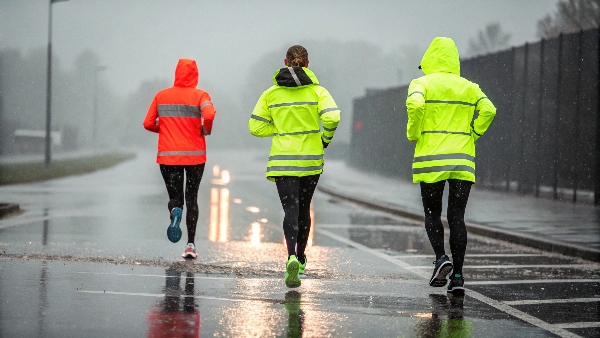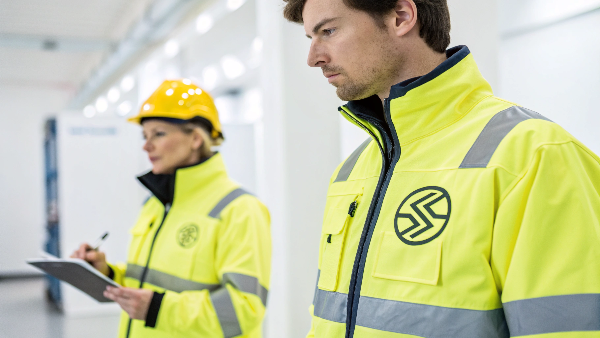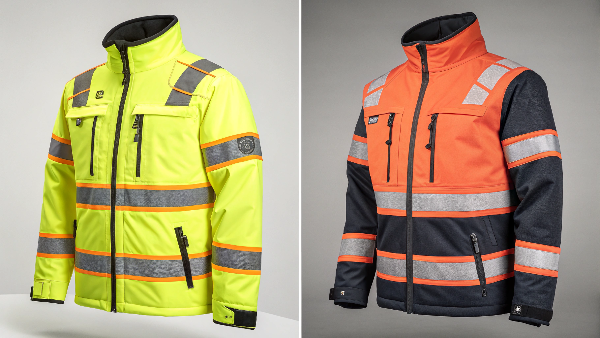Caught in unexpected weather, feeling exposed? A jacket hood offers immediate protection, keeping you comfortable and shielded from the elements. It's a simple yet vital feature.
A hood's main job is to give you extra warmth and protection. It shields your head and neck from wind, rain, and snow. Hoods also trap warm air, cutting down heat loss and keeping you comfier in the cold.
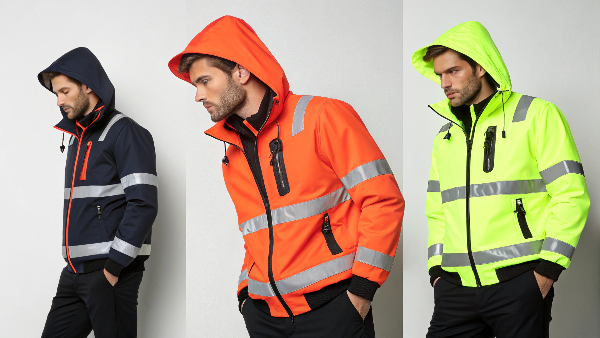
It might seem like a basic feature, but there's actually a lot more to a jacket hood than you might think. We often overlook its importance, but it can make a huge difference in comfort and protection. Let's dive deeper into why hoods are such a crucial part of many jackets and explore their various benefits.
Do you need a hood on a jacket?
Wondering if that hooded jacket1 is truly essential? Choosing incorrectly means you might overspend or miss out on vital protection when you least expect it. Understanding its benefits helps.
You likely need a hood if you often face unpredictable weather or work outdoors. For exposure to cold, wind, or rain, a hood is highly recommended for proper protection.
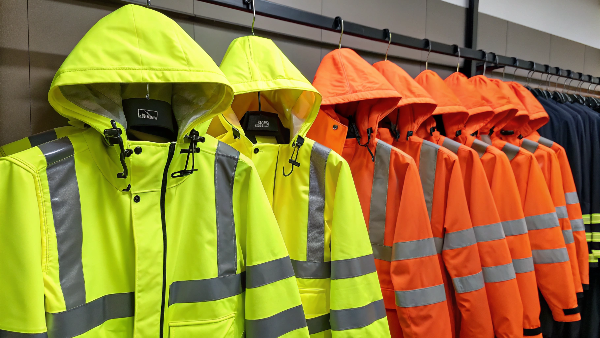
Deciding whether a hood is necessary really comes down to your specific activities and the environments you'll be in. For many of our clients at Vissafety, especially those purchasing for workers in construction or logistics, a hood isn't just a preference; it's a practical necessity. Think about it: if you're working outdoors, exposed to rain showers or biting winds, having that integrated head protection means one less thing to worry about. It’s always there, attached to your jacket. While a separate hat offers some protection, it might not shield your neck or stay put in strong winds like a well-designed, adjustable hood can. For instance, we've worked with Danny Cheng's company for years, supplying high-visibility jackets2, and his clients in North America rely on hoods that are not only protective but also helmet-compatible for safety compliance.
Here's a simple breakdown:
| Feature Aspect | Hooded Jacket Advantage | No Hood Jacket Consideration |
|---|---|---|
| Weather Shield | Offers direct protection for head and neck from elements. | Requires separate headwear. |
| Warmth Factor | Helps retain body heat, especially around the head. | Head is exposed, leading to heat loss. |
| Convenience | Always attached and ready for immediate use. | Need to carry an extra item (hat). |
| Versatility | Makes the jacket suitable for a wider range of conditions. | Less adaptable to sudden weather change. |
Ultimately, if your work or lifestyle involves frequent encounters with less-than-ideal weather, a hooded jacket is a smart choice.
Why are hoods on jackets so big?
Do some jacket hoods seem excessively large or awkward? This can make you feel like your vision is restricted or the hood is just plain clumsy. There are solid design reasons.
Hoods are often big to fit over helmets, especially in safety wear. They also allow for layering with hats underneath or aim to give maximum coverage and good peripheral vision.
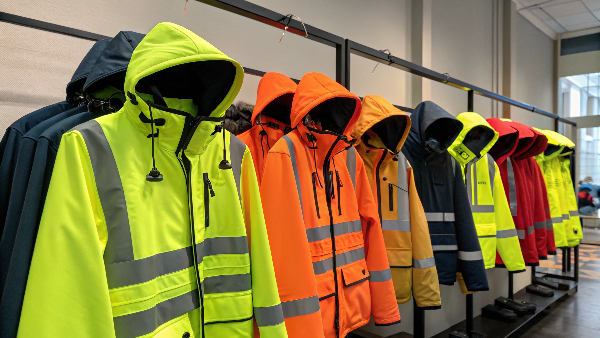
The size of a jacket hood isn't arbitrary; it's usually a result of careful design considerations, especially in performance and safety wear like we manufacture at Vissafety. One major reason for larger hoods is helmet compatibility3. For workers in industries such as construction or oil and gas, who need to wear hard hats, the jacket hood must be spacious enough to fit comfortably over the helmet without restricting movement or vision. We ensure our specialized safety jackets meet this requirement. Another factor is layering. In very cold conditions, you might want to wear a beanie or other thermal headwear under your hood for extra insulation. A larger hood accommodates this. Furthermore, a generous cut can provide better overall coverage, shielding more of your face from driving rain or snow. Many of these larger hoods come with adjustment systems—like drawcords or toggles—so you can cinch them down for a snug fit when you're not wearing a helmet or extra layers. This adaptability is key. I remember a project with Danny Cheng where we developed a line for extreme cold; the hood size was a critical discussion point to balance protection and usability.
Here’s why hood sizing matters:
| Reason for Larger Hood Size | Benefit Provided | Potential Downside if Not Adjustable |
|---|---|---|
| Helmet Compatibility | Essential for safety compliance in many industries. | Can feel too loose without a helmet. |
| Layering Capacity | Allows for extra insulation with hats/beanies. | May seem bulky if not layering. |
| Enhanced Coverage | Offers more protection from severe weather. | Could impair peripheral vision. |
| Adjustability Focus | Design often includes drawstrings for a customized fit. | Without adjustment, less versatile. |
So, a big hood is often a sign of a thoughtfully designed jacket, intended for serious use.
What is the purpose of the hood?
Think a hood is only for rainy days? You might be overlooking other significant advantages a hood can offer in various situations. Understanding its full purpose helps you appreciate this feature.
Beyond just shielding from weather, a hood's purpose includes boosting warmth retention, improving visibility if made with hi-vis material, and even offering minor bump protection.
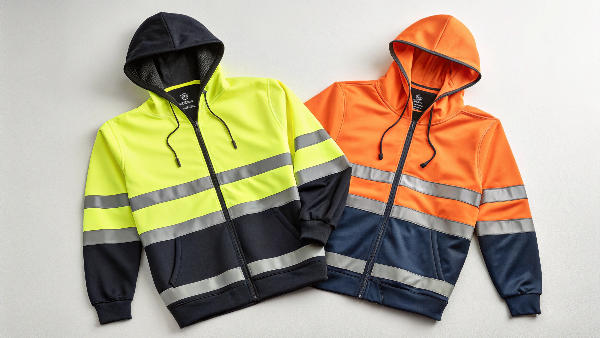
While the most obvious purpose of a hood is to protect your head from rain, snow, and wind, its functions extend further. A significant amount of body heat can be lost through an uncovered head, especially in cold conditions. A hood traps a layer of air around your head, acting as an insulator and significantly reducing this heat loss, thereby helping to maintain your core body temperature. In the realm of high-visibility clothing, which is our specialty at Vissafety, the hood plays a crucial role in safety. When made from fluorescent and reflective materials compliant with standards like EN ISO 20471 or ANSI/ISEA 107, the hood increases the wearer's overall visibility, especially from behind or when bending over. This is a vital safety aspect for workers near traffic or heavy machinery. While not a substitute for a hard hat, a sturdy hood can also offer a minor degree of protection from light bumps or dripping debris. It's about providing comprehensive protection and comfort.
Consider these varied functions:
| Functional Aspect | Description | Relevance in Vissafety Products |
|---|---|---|
| Weather Protection | Shields head and neck from rain, snow, and wind. | Core feature using waterproof/resistant fabrics. |
| Thermal Insulation | Reduces heat loss from the head, crucial in cold environments. | Enhanced with insulated lining in winter gear. |
| Increased Safety | Can be part of hi-vis design4, improving wearer conspicuity. | Hoods often made from certified hi-vis material. |
| Comfort Element | Provides a sense of enclosure and can shield face from harsh elements. | Adjustable designs for better fit and comfort. |
A hood is a multi-functional component designed to enhance both protection and wearability.
What is the point of a hood on a jacket?
Still wondering why hoods are such a standard feature? It might seem like an extra bit of fabric, but it adds real value. The point is to offer ready protection and comfort.
The main point of a hood is to give you versatile, on-demand head protection and comfort. It helps your jacket adapt to different conditions without needing separate headwear.
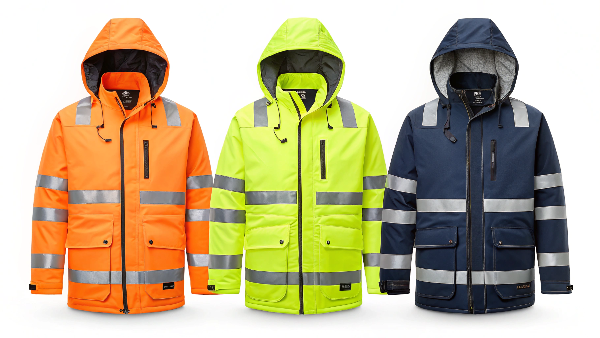
The fundamental point of integrating a hood into a jacket design is to enhance its utility and protective capabilities significantly. It's about providing an immediate, convenient solution for head protection that's always part of the garment. Think about the versatility it adds. A single jacket can suddenly become suitable for a much wider range of weather conditions, from a cool breeze to a sudden downpour or snowfall. This convenience is a major factor; you don't have to remember to pack a separate hat or worry about it getting lost. For our B2B clients at Vissafety, offering jackets with well-designed hoods often translates to a more appealing product for their end-users. It’s a feature that speaks to preparedness and practicality. For instance, when we develop customizable workwear, the inclusion and design of the hood (e.g., detachable, stowable, helmet-compatible) are key discussion points to meet specific industry needs. It transforms a simple jacket into a more comprehensive piece of protective apparel.
Here’s a summary of the core points:
| Benefit | Explanation | Implication for User/Buyer |
|---|---|---|
| Adaptability | Allows the jacket to be used effectively in more weather scenarios. | Greater value from a single garment. |
| Convenience | Head protection is always attached, ready for instant deployment. | No need to carry or remember separate headwear. |
| Enhanced Value | Adds significant functionality with relatively little added complexity. | A more complete and practical product offering. |
| Improved Safety | Contributes to overall safety through weather protection and visibility. | Better protection and comfort for the wearer. |
The point is to make the jacket a more complete, reliable, and adaptable piece of clothing.
Do you really need a hood?
Deciding if a hood is a must-have or just nice-to-have? Making the wrong choice can mean being unprepared or carrying unnecessary bulk. Let's help you figure out your personal need.
You really need a hood if you often face unpredictable weather, work outdoors, or value maximum protection and warmth without carrying extra items like hats or umbrellas.

Whether you specifically need a hood boils down to a personal assessment of your typical activities, environment, and preferences. If your daily routine involves significant time outdoors, especially in regions with volatile weather, a hood becomes less of a luxury and more of a necessity. For example, many of our Vissafety clients who supply to construction crews or field technicians consider hooded jackets non-negotiable. These workers can’t just run indoors when it starts raining or the wind picks up. Consider how often you find yourself wishing you had head cover. Do you dislike carrying a separate hat or an umbrella? If so, an integrated hood offers that seamless solution. Also, think about the intensity of protection you need. A light drizzle might be manageable with a cap, but for heavy rain, snow, or cutting winds, a well-fitted hood that covers your neck and cinches snugly provides far superior defense and warmth. It’s about being prepared for the conditions you're most likely to encounter.
Ask yourself these questions:
| Factor to Consider | Lean Towards "Yes, I Need a Hood" If... | Lean Towards "Maybe Not Essential" If... |
|---|---|---|
| Weather Exposure | You're frequently in rain, snow, or windy conditions. | You're mostly indoors or in mild, dry weather. |
| Outdoor Activity | You work/commute outdoors, hike, or engage in outdoor sports. | Your outdoor time is minimal or in controlled settings. |
| Convenience Priority | You prefer all-in-one solutions and dislike extra items. | You don't mind carrying a separate hat or umbrella. |
| Warmth Requirement | You easily get cold or are in consistently cold climates. | You generally stay warm or prefer layering options. |
Your answers will guide you to the right choice for your needs.
What to do if my jacket doesn't have a hood?
Love your jacket, but it lacks a hood when you need one? This can leave you caught out in bad weather, feeling the chill. Luckily, there are practical alternatives for head protection.
If your jacket doesn't have a hood, use separate headwear. Options include waterproof hats, warm beanies, or even an umbrella. Some jackets might fit aftermarket detachable hoods.

If you find yourself with a great jacket that unfortunately lacks a hood, don't despair. You still have several effective ways to protect your head from the elements. The most straightforward solution is to use separate headwear. A waterproof, brimmed hat can keep rain off your face, while a warm beanie is excellent for cold weather. For more substantial rain protection, an umbrella is an option, though it's not always practical if you need your hands free. Some jackets are designed with discreet attachment points (like small loops or zippers around the collar) that allow you to add an aftermarket, compatible hood. It's worth checking if your jacket has this feature. Another strategy, especially for warmth, is to layer a thin, hooded garment (like a hooded fleece or base layer) underneath your main jacket. This gives you a hood option when needed. At Vissafety, while we focus on integrated solutions, we understand the need for adaptability. If a specific high-visibility jacket design doesn't include a hood for a particular reason, we always advise clients to ensure their teams have appropriate alternative PPE headwear.
Here are some common alternatives:
| Alternative Headwear | Pros | Cons |
|---|---|---|
| Waterproof Hat | Good rain/sun protection, often lightweight. | Less neck coverage, can be blown off in strong winds. |
| Beanie/Thermal Hat | Excellent for warmth, comfortable. | Usually not waterproof unless specifically treated, can get wet. |
| Umbrella | Provides broad coverage from rain/snow when stationary. | Impractical for active use, occupies one hand, struggles in wind. |
| Detachable Hood | Adds hood functionality if jacket is compatible. | Jacket must have attachment points, hood can be misplaced. |
| Hooded Mid-Layer | Adds a layer of warmth and an optional hood. | Can add bulk, mid-layer hood might not be weatherproof. |
Choosing the right alternative depends on the weather and your activity.
Should I buy a jacket with a hood?
Facing the dilemma: to hood, or not to hood? Worrying about this choice might lead to a purchase that doesn't fully meet your needs later on. Let's guide you with practical points.
Yes, consider buying a jacket with a hood if you expect to need head protection from weather. Also, if you value convenience or work where extra warmth and safety are key.
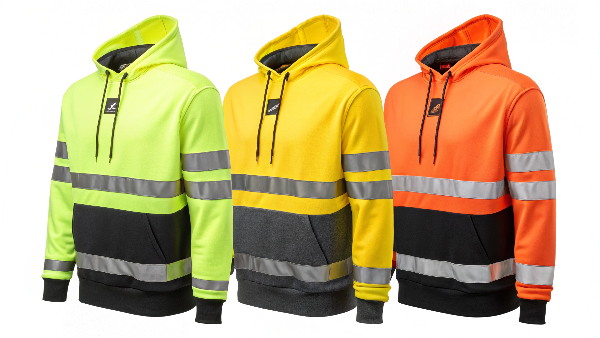
When deciding whether to purchase a jacket with a hood, think about your most common usage scenarios. If you frequently anticipate being exposed to rain, snow, wind, or cold temperatures, a hood is a highly practical feature. It offers instant protection without the need to carry extra accessories. This convenience is a significant plus for many people. For us at Vissafety, when advising our B2B clients like distributors or large corporate buyers, we often highlight that jackets with hoods cater to a broader range of needs and environments, making them a more versatile stock item. Consider the type of hood too: is it fixed, detachable, stowable, or helmet-compatible? Each style offers different benefits. A detachable hood provides versatility, while a helmet-compatible one is crucial for certain professions. Investing in a jacket with a well-designed hood is often a smart long-term choice, ensuring you're prepared for whatever the weather throws your way. It’s about maximizing the jacket's utility.
Key factors for your decision:
| Consideration | Lean Towards a Hooded Jacket If... | Lean Towards a Hoodless Jacket If... |
|---|---|---|
| Primary Environment | You'll be outdoors in varied or unpredictable weather. | You'll primarily be indoors or in consistently mild weather. |
| Activity Level | You need protection during active pursuits or work. | Your activities don't typically require head cover. |
| Convenience Factor | You prefer an all-in-one garment for ease of use. | You prefer to select specific headwear for each occasion. |
| Safety Needs | The hood contributes to visibility (hi-vis) or helmet use. | These specific safety aspects are not a primary concern. |
| Future Use | You anticipate needing the versatility a hood offers down the line. | Your needs are very specific and don't include a hood. |
A hooded jacket often provides better overall value by being more adaptable.
Do hoods make you warmer?
Wondering if that flap of fabric actually boosts warmth? It's easy to doubt the thermal impact of a hood, especially a thin one. Let's explain how they really help.
Yes, hoods definitely make you warmer. They achieve this by trapping a layer of air5 around your head and neck, significantly reducing heat loss and shielding you from cold wind.
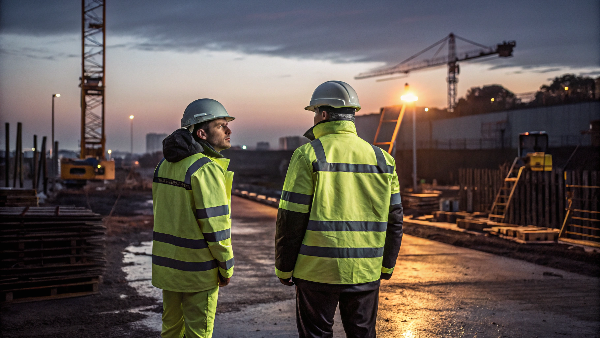
Hoods play a surprisingly significant role in keeping you warm. A large percentage of your body heat can escape through an uncovered head, especially in cold and windy conditions. When you pull up a hood, it creates a pocket of air around your head and neck. This trapped air is warmed by your body heat and acts as an insulating layer, much like the insulation in the body of your jacket. Furthermore, a hood provides a crucial barrier against wind chill. Wind can strip away heat from your skin very rapidly, making you feel much colder than the actual air temperature. By blocking the wind, a hood helps maintain that layer of warm air and protects your sensitive ears and face. Many hoods also offer coverage for the neck, another area prone to heat loss and discomfort in the cold. At Vissafety, when designing jackets for cold climates, the hood's fit, insulation, and ability to seal out drafts are critical design elements. We aim to maximize thermal efficiency6. Even a relatively thin hood can make a noticeable difference in your overall comfort and warmth.
Here’s how hoods contribute to warmth:
| Mechanism of Warmth | How It Works | Impact on Wearer's Comfort |
|---|---|---|
| Trapping Still Air | Creates an insulating layer of air warmed by body heat around the head. | Reduces convective and radiative heat loss. |
| Wind Blocking | Prevents cold wind from directly hitting the skin and carrying away heat. | Minimizes the wind chill effect7 significantly. |
| Covering Head/Neck | Protects areas of the body that are prone to rapid heat loss. | Helps maintain core body temperature. |
| Shielding Elements | Keeps cold rain, snow, or sleet off the head and neck. | Prevents chilling effect from moisture. |
So, the answer is a clear yes – a hood is a valuable feature for staying warmer.
Conclusion
In short, a hood on a jacket is key for protection, warmth, and convenience. It makes your jacket much more versatile for different weather conditions.
-
Explore the advantages of hooded jackets to understand why they are essential for outdoor activities and unpredictable weather. ↩
-
Learn about the significance of high-visibility jackets in ensuring safety for workers in hazardous environments. ↩
-
Understanding helmet compatibility can help you choose jackets that ensure safety and comfort in hazardous environments. ↩
-
Exploring hi-vis design will show you how hoods enhance visibility and safety in various environments. ↩
-
Understanding the science behind air insulation can enhance your knowledge of thermal clothing and its benefits. ↩
-
Learning about thermal efficiency can guide you in choosing better clothing for cold climates. ↩
-
Exploring the wind chill effect will help you appreciate the importance of hoods in cold weather gear. ↩

